"The third disc of Subsistence hasn't been created to view in the same way that one might watch a movie. The creation is intended to be a game that one can watch as though it were a movie - but, nonetheless, it remains a game."
- Hideo Kojima, Hideoblog
This third disc that Metal Gear Solid creator Hideo Kojima speaks of is a collection of cut-scenes from Metal Gear Solid 3: Snake Eater, edited together into a cinematic retelling of Snake Eater's story. It's a literal adaptation of the game that splits the narrative into an easier-to-swallow three-hour piece while still retaining what kept the audience riveted to the video game's tale. In some ways it's a brilliant experiment: extract the game from the story and the story from the game and see just how the end result fares. Does the narrative hold up, or does it fall apart when stripped of its game elements?
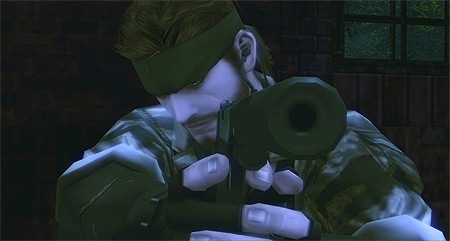
Metal Gear Solid 3, both the game and the film, concern themselves with detailing the events preceding the Metal Gear franchise, including those initiated by its progenitor, Metal Gear for the MSX. Jack (a.k.a. Snake), a special operative for the CIA, is sent to the U.S.S.R. to destroy a newly developed nuclear tank. Part of this mission entails taking out The Boss, an American CIA defector and Snake's prior teacher, who, along with her specially trained Cobra team, work for the renegade Soviet group harboring this new technology. To bring these radicals down, Snake must not only survive his enemies, but the harsh Russian wilderness.
Here is where the game and the film start to diverge. In the game, a great importance is placed on the wilderness and the steps Snake has to take to weather it. Snake doesn't have unlimited stamina, and he must keep himself energized by subsisting on the local fauna and flora. He must use the environment to his advantage by donning a number of different camouflage suits to disappear into the wilderness and accomplish his missions unseen. A great deal of the game is spent on these two activities alone, as you're constantly eyeing your camo-rating to make sure you're wearing the proper camouflage for your surroundings as well as monitoring your stamina, and hunting snakes, rabbits, frogs and plucking mushrooms to keep your health up.
Consequently the environment becomes a character in the game, with each nook-and-cranny acting as character attributes. The landscape is cantankerous, but occasionally compassionate, and you grow to appreciate it more and more as you slither Snake around the land, pressing through the swamps, scaling trees and permeating the jungles. The sustenance the land provides Snake also helps to flesh out his personality, as upon trying each species he'll quip some remark which serves to tell you not only the scope of the food's healing abilities, but also Snake's prior history and palate inclinations.
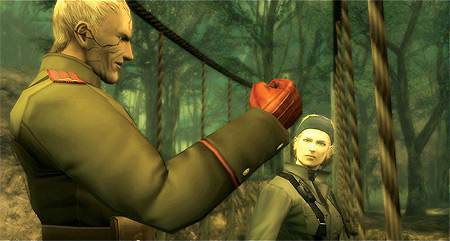
Unfortunately this is all scrapped from the film. There's hardly a foraging instance in the story, and Snake's snake eating is solely represented in a romantic fireside dinner with fellow double spy Eva. The lands are never picturesque, with long shots establishing the layout of the environment few and far between, each scene feels randomly generated, as if the U.S.S.R. is an arbitrary mesh of jungle, swamp and rubble. It's a severe disappointment to see the subsistence robbed from Subsistence, and it's a more superficial, less fulfilling movie because of it.
Another way the game spun its narrative was by invoking a clever twist into their cut-scenes. Perhaps feeling the brunt of criticism towards the lengthy (often 20 minutes or longer) cut-scenes in Metal Gear Solid 2: Sons of Liberty, cut-scenes in Metal Gear Solid 3 are uniquely interactive. Occasionally while playing, an R1 icon would flash in the upper right-hand corner of the screen. Pressing this button on the controller results in seeing the scene not through the third-person, cinematic camera, but through the eyes of Snake himself, allowing flashes of insight into Snake's disposition. For instance, during one scene when Snake meets fellow female spy Eva, the primary cut-scene camera has a level perspective, but if you view the scene through Snake's eyes you see that he spends the majority of the time staring at Eve's cleavage. Granted, it's not exactly the classiest gaze but it works to show Snake as something more than just an avatar.
This brings up the issue that the film just can't recreate the player's perspective. The tension of sneaking up on a guard and knowing that just a single slip of the analog stick can immediately endanger you is a different beast from that of an elaborately constructed, non-interactive, montage of one character sneaking up on another. The game contains moments such as as trekking up an exceptionally tall ladder or bits as drawn-out as an hour-long sniper battle that outside of a video game would come off as menial drudgery. However, for the player behind the controller, these moments become something more, it's enormously immersive and infuses the game with the atmosphere and environmental insight that allows Metal Gear Solid 3 to transcend a simple tale of espionage and become an epic tale of patriotism, family and war.
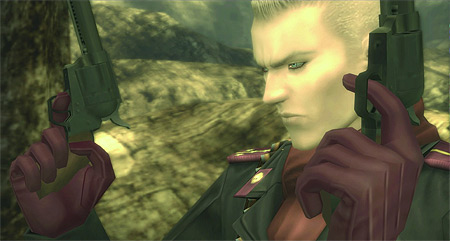
However, when the controller is removed from the player's hands, these in-game scenes lose their dramatic tension. The film portion occasionally utilizes these in-game action scenes to provide transitions between the standard cut-scenes and they just don't work. The camera angles used in these scenes are utilitarian, they're positioned so the player can have the best vantage point to circumnavigate their obstacles. When no one is actually playing the scene, something as dramatically tense as sneaking up and taking out several soldiers without them being any wiser feels surprisingly dull and detached. Character animations, sped-up in-game so the player feels that Snake is responsive to their button-presses, come off as jerky and alien when viewed in the film. Simply put, these bridges feel at best, sloppy, and at worst, completely out-of-place. While it's obvious that they needed some kind of transition to show Snake actually infiltrating the enemy, this approach simply doesn't work.
Now the standard cut-scenes, those work surprisingly well. Most of them have come from the game intact, and are just as dramatic and fluid as they were in the game. The character models and attention to detail is good enough that it really never feels as if the visuals were created because of a game, but that it's just a stylized animated film. The attention to character details, nuances in their clothing, hair and facial quirks has Metal Gear Solid 3's engine feeling much less soulless than your standard video game. The eyes are especially lively, with an active glint that belies the true nature of these computer constructs.
Sadly, due to the absence of a staple from the Metal Gear franchise, some of the characters haven't made the transition from to the film. Codec moments, a mostly static scene where Snake would receive intel from officials, other spies, or just an encouraging word from the peppy medical overseer Para-Medic, has been cut entirely. While the loss of a mostly motionless image probably won't be lamented by most, it's another example of any character details getting excised for the sake of keeping the film lean. Snake's rapport with Para-Medic was charming, and her constant musing about films added some much-needed levity to the game. Surely a few nods in her direction would have been appreciated, at least to infuse some sort of whimsy into the film and help flesh Snake out for those who aren't so intimately familiar with him from the prior games.
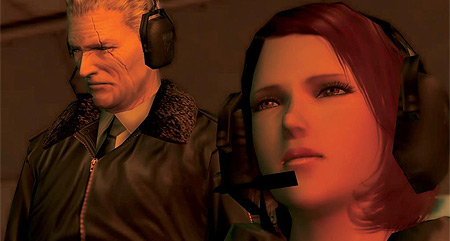
Similarly, those not familiar with the prior Metal Gear Solid games might feel disoriented by the narration, of all things. In a rather odd move, the opening narration (previously voiced by Snake) was changed to that of an unidentified third party, and who sounds a bit too close to Major Tom, one of Snake's superiors who frequently radios Snake with information and instructions. Combine that with a few additional voiceover bridges and the end result is a cacophonous mess that can be difficult to pieces together. While it doesn't doom the film, it certainly comes off as a bit slipshod, and the only adds to an already muddled narrative perspective.
"With this disc, anyone can experience the drama in [Metal Gear Solid 3: Snake Eater] and cry."
- Hideo Kojima, Gamespot interview
Certainly the option of watching this disc is better than missing out on Metal Gear Solid 3 entirely, however, I'm hesitant to call this experiment an unqualified success. In fact, most of what succeeded was the fact that Metal Gear Solid 3 was competently drafted and paced from the beginning. The actual deconstruction of the story into a three-hour film ultimately feels clumsy, thanks to an imprecise narrative voice and the gutting of most of Snake's more personal moments, yet the primary essence of the game's story remains intact. That is to say, the tale of these soldiers still rings as poignant and profound, but most of the heart has been gutted. The depth of these characters, their struggles, no longer remain in the film. Encounters with the outlandish Cobra soldiers are glib, and never convey the seriousness and enormity that they take on in the game. The hour-long sniping battle with the reptilian-like soldier named The End is turned into a two minute-long encounter, mostly consisting of The End's opening monologue, and contains little sniping at all.
Simply put, Metal Gear Solid 3, as a game, was Snake's battle to wage. Even though he was following orders, he was the sole person on this mission. The game did a magnificent job of making you feel as if you really were alone, left only with whatever can be obtained through the environment to survive. Metal Gear Solid 3, the film, is an intriguing tale of espionage and political warfare, but hardly culminates into little more that. The Snake's turmoil and the depth of surrounding characters has been excised to make way for an above-average political thriller.
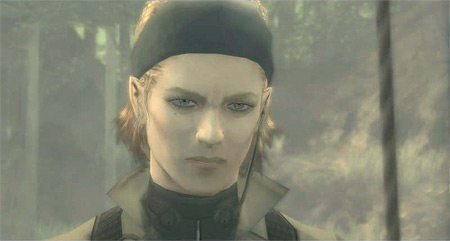
"Players should be able to enjoy new games for the pleasure of playing through the story by themselves, for the variation in content that leads to more replay value with others, and for the excitement of watching the plot of the game as though it were a film. ... Hereafter, playing and watching will be required of an audience via the same medium."
- Hideo Kojima, Hideoblog
It's an interesting experiment, and the use of Metal Gear Solid 3 as such a springboard certainly is an inspired one. On one hand, its singularly strong narrative transcends whichever medium it's told through, however the parts that have been cut for the film certainly show the script's shortcomings. The lack of a strong primary character and defining narrative perspective underscore how important both are to a video game, that it's the gameplay that actively contributes to creating a well-defined character as well as the story's point-of-view. The same parallels can probably be drawn with similar games, such as the lauded Silent Hill 2. If we stitched together its cut-scenes, would James come off as empathetic in his search for his dead wife as he did upon playing through the game, or would an audience perceive him to be a vacant, unrealistic two-dimensional character? As games become more and more story-driven, of course the writers will want their stories to be heard by more and more people, and the truth of the matter is that less and less people are finishing games to completion nowadays, be it due to lack of time, skill or even cost. However, simply pasting the cut-scenes together with a bit of voiceover glue will, as Metal Gear Solid 3 shows us, only result in a substandard retelling of the tale. Perhaps that's all the audience wants, to find out exactly how Snake would finish his objective, regardless of how skillfully it's told, but I hold out hope that the next effort can retain more than the bare plot details.



